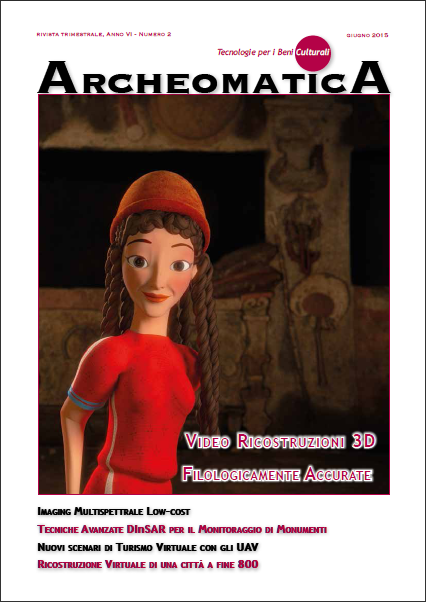Droni e turismo virtuale
DOI:
https://doi.org/10.48258/arc.v6i2.977Parole chiave:
turismo culturale, volo indoorAbstract
Virtual tourism has been through at least three generations.
The first is a special form of e-commerce, and no doubt it has much changed the way you plan your travel. Second generation of virtual tourism has exploited georeference: the user can know the services offered nearby and, with appropriate apps and augmented reality, receive information about places.
An important contribution has been made in this field by social media (see Flickr, as well as Tripadvisor). The third generation of virtual tourism even replaces the travel experience: first proposing visits in virtual worlds, then in the real world. That allows tourism to social classes that are excluded.
The goal is to send in the real place an "avatar", that can perform what tourist wants. Some experiments have been recently performed with robots, here a visit by drones is proposed. In particular, indoor visits are difficult because it is necessary to re-create a microgeodetic reference system in a closed and confined environment, to allow remote control and to ensure the protection of the cultural property. It has also to be considered the issue of the size of the drone, its autonomy and shooting video (which must be 360 degrees and high definition).
The real experience is irreplaceable, but this form of tourism can find many interesting applications and strengthen real tourism.
In conclusion, we believe that not only this performances are now within the reach of our technical capabilities, but they also represent an effective response to certain social and cultural issues.
##submission.downloads##
Pubblicato
Come citare
Fascicolo
Sezione
Licenza
Gli autori che pubblicano su questa rivista accettano le seguenti condizioni:- Gli autori mantengono i diritti sulla loro opera e cedono alla rivista il diritto di prima pubblicazione dell'opera, contemporaneamente licenziata sotto una Licenza Creative Commons - Attribuzione che permette ad altri di condividere l'opera indicando la paternità intellettuale e la prima pubblicazione su questa rivista.
- Gli autori possono aderire ad altri accordi di licenza non esclusiva per la distribuzione della versione dell'opera pubblicata (es. depositarla in un archivio istituzionale o pubblicarla in una monografia), a patto di indicare che la prima pubblicazione è avvenuta su questa rivista.
- Gli autori possono diffondere la loro opera online (es. in repository istituzionali o nel loro sito web) prima e durante il processo di submission, poiché può portare a scambi produttivi e aumentare le citazioni dell'opera pubblicata (Vedi The Effect of Open Access).





